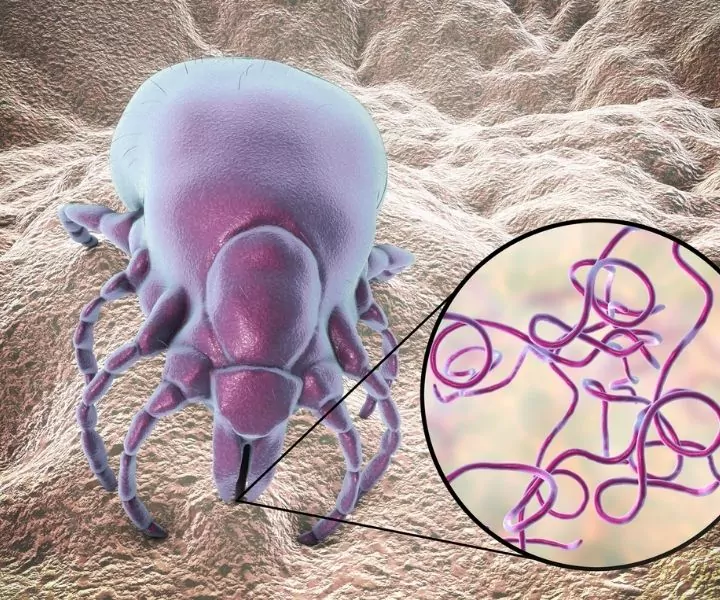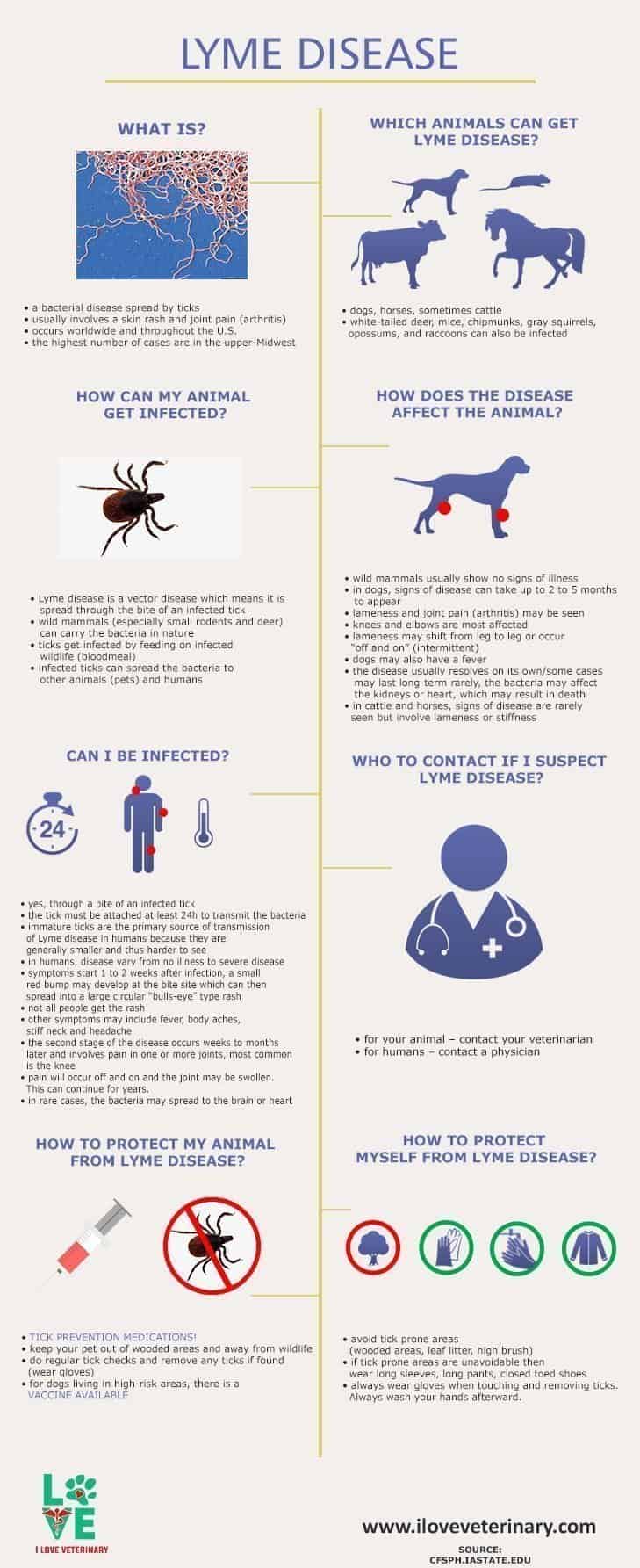What is Lyme Disease in Animals?

- A bacterial disease spread by ticks
- It usually involves a skin rash and joint pain (arthritis)
- Occurs worldwide and throughout the U.S.
- The highest number of cases are in the upper-Midwest
What Animals Can Get Lyme Disease?
- dogs, horses, sometimes cattle
- White-tailed deer, mice, chipmunks, gray squirrels, opossums, and raccoons can also be infected
How Can My Animal Get Infected?
- Lyme disease is a vector disease which means it is spread through the bite of an infected tick
- Wild mammals (especially small rodents and deer) can carry the bacteria in nature
- Ticks get infected by feeding on infected wildlife (bloodmeal)
- Infected ticks can spread the bacteria to other animals (pets) and humans
How Does Lyme Disease Affect The Animal?
- Wild mammals usually show no signs of illness
- In dogs, signs of disease can take up to 2 to 5 months to appear
- Lameness and joint pain (arthritis) may be seen
- Knees and elbows are most affected
- Lameness may shift from leg to leg or occur “off and on” (intermittent)
- Dogs may also have a fever
- The disease usually resolves on its own/some cases may last long-term
- Rarely, the bacteria may affect the kidneys or heart, which may result in death
- In cattle and horses, signs of disease are rarely seen but involve lameness or stiffness

Can Humans Contract Lyme Disease?
- Tes, through a bite of an infected tick

- The tick must be attached at least 24h to transmit the bacteria
- Immature ticks are the primary source of transmission of Lyme disease in humans because they are generally smaller and thus harder to see
- In humans, disease vary from no illness to severe disease
- Symptoms start 1 to 2 weeks after infection, a small red bump may develop at the bite site which can then spread into a large circular “bulls-eye” type rash
- Not all people get the rash
- Other symptoms may include fever, body aches, stiff neck and headache
- The second stage of the disease occurs weeks to months later and involves pain in one or more joints, most common is the knee
- Pain will occur off and on and the joint may be swollen. This can continue for years.
- In rare cases, the bacteria may spread to the brain or heart
Who Should I Contact if I suspect Lyme Disease?
- for your animal – contact your veterinarian
- for humans – contact a physician
How to Protect My Animal From Lyme Disease?
- Tick prevention medications!
- Keep your pet out of wooded areas and away from wildlife
- Do regular tick checks and remove any ticks if found (wear gloves)
- For dogs living in high-risk areas, there is a vaccine available
How do I Protect Myself Againt Lyme Disease?
- Avoid tick prone areas (wooded areas, leaf litter, high brush)
- If tick prone areas are unavoidable then wear long sleeves, long pants, closed toed shoes
- Always wear gloves when touching and removing ticks. Always wash your hands afterward.
Other Facts About Lyme Disease
Lyme disease is an infectious disease caused by bacteria carried by the bite of the deer tick. Bacteria are not actually present in the tick’s saliva, so Lyme disease cannot be contracted if simply brushing or scratching a tick off your skin.
There are currently three categories of Lyme disease: acute, hypersensitivity (aka hypersensitivity), and chronic. The most common scenario for contracting this disease is through a bite from an infected deer tick that sets its eggs on you after feeding on blood during the blood-feeding period.
The Lyme infection is transmitted from the tick to its eggs and then, through the eggs, to humans. Lyme disease can be treated both with antibiotics and with natural herbs.
The bacteria that cause Lyme disease are part of a family known as spirochetes, which also include the bacteria that cause syphilis. The more popular name of this family is spiral or corkscrew bacteria. These bacteria have varying numbers of short, tightly coiled tails called flagella that help them move around in their environment.
